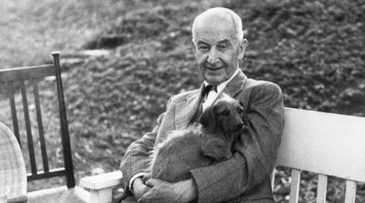Product Description
Max Läuger Germany Unique Jugendstil footed bowl inlaid with gold mosaic 1906


PROF. MAX LÄUGER (1864-1952) Karlsruhe, Germany
Unique Jugendstil ceramic footed bowl inlaid with gold mosaic 1906
Light and dark green glazed earthenware inlaid with mosaic gold glass squares on four cylindrical feet.
Marks: ML, K (monogram)338 (incised), 4., MUSTER B.., GESCHTZ
For other mosaic inlaid works by Max Läuger see: Max Laeuger (1864-1952): sein graphisches, kunsthandwerkliches und keramisches Oeuvre, Elisabeth Kessler-Slotta (Saarbrücken: Saarbrücker Druckerei und Verlag, 1985) pp. 178/179; Europäisches Kunstgewerbe 1927, Stadtisches Kunstgewerbe-Museum zu Leipzig, (Leipzig: E.A. Seeman, 1928) p. 86; Deutsche Kunst und Dekoration vol. XII “Professor Max Laeuger Karlsruhe”, pp. 221-237; Modernism: Modernist Design 1880-1940 (The Norwest Collection, Norwest Corporation, Minneapolis), Alastair Duncan (Woodbridge, Suffolk, England: The Antique Collector’s Club, 1998), p. 86.
H: 5 3/4″ x Dia: 7 1/4″
Max Laeuger (or Läuger) was born in Lörrach on September 30, 1864. Laeuger was a self taught ceramicist, studied at the Karlsruhe Polytechnic a hundred miles to the north-west of Lörrach (now Karlsruhe University) and eventually became a professor at the university. In 1895 after travelling throughout Europe visiting the major cultural centers to study art he was appointed director of the art pottery department of Tonwerke Kanderne close to his home town. He stayed there until 1913 and later took up a similar position at Majolika-Manufaktur in Karlsruhe.
From 1921 he had his own workshop on the premises formerly owned by the company and produced designs there. The work produced fell into three categories, slip decorated wares designed by Laeuger but produced entirely by the factory, pieces made at the factory but decorated and glazed by Laeuger and one-off pieces by the professor made from beginning to end in his own workshop. All were marketed by Majolika-Manufaktur. Laeuger’s one-off pieces had the brushed initials ‘ML’ and the other works were marked ‘LAEUGER’ or ‘PROF. MAX LAEUGER’
Through the thirties and into the Second World War he worked on his own, but after his workshop was destroyed in 1944 he returned to Lörrach where he died on December 12, 1952. Laeuger was a major figure in German ceramics. His designs and his glazes had ‘organic’ characteristics that are his signature design and his work is much sought-after by collectors. Examples of Laeuger pieces are on display at the Badisches Landesmuseum in Karlsruhe.
Max Läuger Germany Unique Jugendstil footed bowl inlaid with gold mosaic 1906
You must be logged in to post a comment.
TIM LIDDY
“Game of Boom or Bust” (1951) Presidential Sweepstakes 2006
Oil and enamel on copper, plywood back
Signed in script: Tim Liddy “circa 1951” 2006, red circular ring
Provenance: William Shearburn Gallery (St. Louis, MO)
H: 15 1/8” x W: 15 1/8” x D: 2”
With his recent paintings, Liddy has both reasserted the construct of hyperrealist painting and developed a thoroughly unique advancement of that mode by extending the cultural reality of the indexed original. Based on the illustrated box lids of vintage board games, Liddy has recontextualized a subject, which evokes the underlying rules of life. Painted on copper or steel in the precise dimensions of the original, the metal is then manipulated to demonstrate the exact rips and tears from years of usage and includes trompe-l’oeil renditions of the scotch tape that might be holding the cardboard box together, the assorted stains, or the various graffiti of time. Liddy leaves no possibility of ambivalence, these works speak to a concurrent understanding of their original object identity and to themselves as works of art engaged in historical and psychological dialogue.

Reviews
There are no reviews yet, would you like to submit yours?